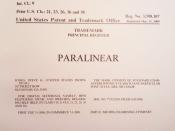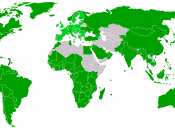Trademark Law
Trademark law governs the use of a device (including a word, phrase, symbol, product shape, or logo) by a manufacturer or merchant to identify its goods and to distinguish those goods from those made or sold by another. Trademark law also governs service marks, which are used on services rather than goods. In the United States, certain common law trademark rights stem merely from the use of a mark. However, to obtain the greatest protection for a mark, it is usually advisable to register the mark with the federal government, or with a state government. A mark which is registered with federal government is marked with the î symbol. Unregistered trademarks are marked with a "tm", while unregistered service marks are marked with a "sm".
Trademark status may be granted to distinctive and unique packaging, color combinations, building designs, product styles, and overall presentations. It is also possible to receive trademark status for identification, which is not on its face distinct or unique but which has developed a secondary meaning over time that identifies it with the product or seller.
The owner of a trademark has exclusive rights to use it on the product it was intended to identify, and often on related products. Service marks receive the same legal protection as trademarks but are meant to distinguish services rather than products.
There are different types of trademarks. Merchants and others use five different types of marks to identify themselves and their products. These are (1) trademarks, (2) trade names, (3) service marks, (4) collective marks, and (5) certification marks. All five are generally known as trademarks. Trademarks are generally distinctive symbols, pictures, or words that sellers use to distinguish and identify the origin of their products.
A trademark is any word, name, symbol, or device or any...



Another outstanding paper
This one is very informative with evidence of extensive research behind the paper. Organization and transitions are perfect.
Again, one small recommendation would be to include references.
Excellent.
5 out of 5 people found this comment useful.